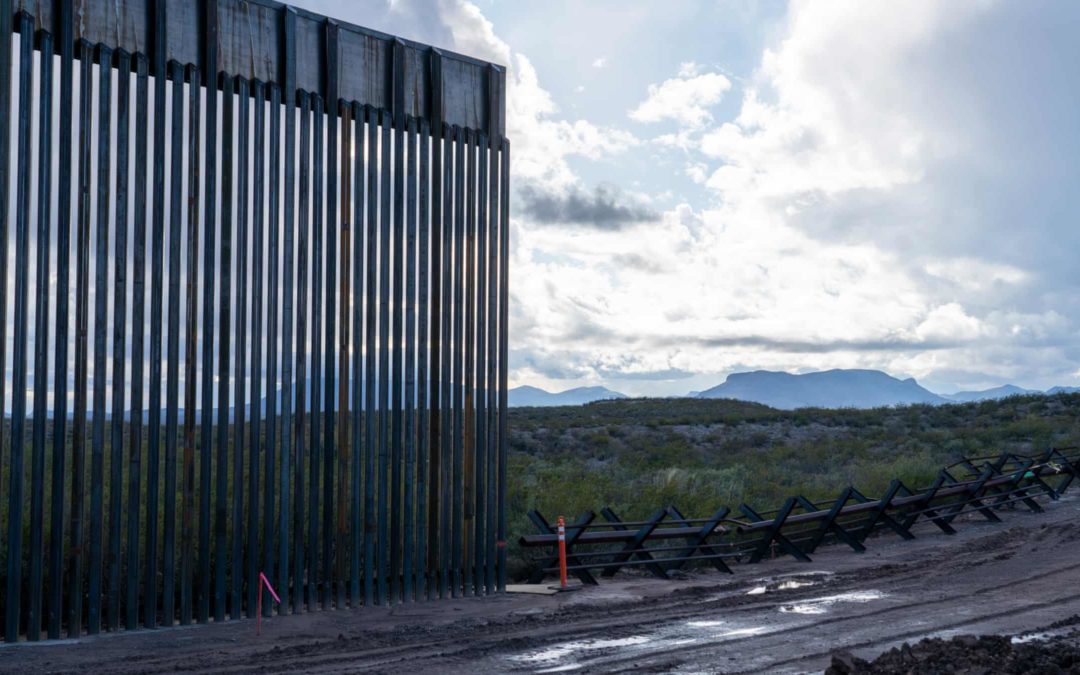SOURCE: The Guardian
DATE: December 29, 2019
SNIP: The survival of eight endangered and threatened species, including four kinds of endemic fish, is in doubt in Arizona, as massive quantities of groundwater are extracted to construct Donald Trump’s border wall.
The 30ft-high barrier is under construction on the edge of the San Bernardino national wildlife refuge in south-eastern Arizona, where rare desert springs and crystalline streams provide the only US habitat for the endangered freshwater Río Yaqui fish.
The region’s water reserves are already depleted due to prolonged drought and record high temperatures linked to the climate crisis. The expansion of water-intensive crops such as alfalfa and pecan farms is also draining aquifers in the arid region.
Now, experts fear that construction of this 20-mile stretch of Trump’s wall, which began in October, has reduced spring flow and groundwater levels in San Bernardino which provide scarce habitat for the Yaqui topminnow, chub, beautiful shiner and the most vulnerable, the Yaqui catfish.
“There’s good reason to believe that the Yaqui fish’s only US habitat is drying up as a result of tens or hundreds of thousands of gallons of groundwater being pumped to build the border wall,” said Laiken Jordahl, a borderlands campaigner with the Center for Biological Diversity who recently visited the area.
In September, the Trump administration pledged to erect 450 to 500 miles of the wall by the end of 2020, an ambitious undertaking to be partially funded by $6bn previously earmarked for defense and counter-drug programmes.
Construction in Arizona and New Mexico is under way, despite multiple ongoing lawsuits challenging the constitutional basis of Trump’s executive orders which diverted billions of defense dollars to the wall by declaring a national emergency in February.
Despite the potential for far-reaching long-term consequences, details about the plans are sparse since the government suspended 28 federal laws mandating protections and oversight, relating to clean air and water, endangered species, public lands and the rights of Native Americans, in order to expedite construction.
The waiver includes the 1969 National Environmental Policy Act (Nepa), considered the cornerstone of environmental protection in the US, the Endangered Species Act, National Fish and Wildlife Act and Migratory Bird Conservation Act. These laws require robust scientific, environmental and costs analysis before projects can be sanctioned.
“With his wall obsession, President Trump has created an environmental crisis at the border,” said the Arizona congressman Raúl Grijalva. “Through environmental waivers and stolen funds, he’s building a wall that will deplete precious water resources, desecrate sacred sites and destroy the environmental treasures and biodiversity that make the borderlands unique.”

Look at the Yaqui catfish photo and its cool whiskers/barbels! The catfish tastebuds are located there and are used to search for food in murky water.
The Arizona stretch will need at least 50 million gallons of water, according to Gary Nabhan, an agricultural ecologist at the University of Arizona in Tucson investigating food and water security on the borderlands. (US Customs and Border Protection (CBP) said it was still working with the army corps of engineers to estimate the volume of water required for construction and dust suppression.)
Work is progressing rapidly in the Tucson sector – which includes the 20-mile San Bernardino stretch. A nearby well has been tapped to extract groundwater which is used to make concrete bases to hold the towering steel slats, and for dust control. Crews have razed a large section of privately owned land near the refuge for the staging area and concrete batching plant. There are currently eight wells being used in the Tucson sector for three sections, according to the CBP.
In addition to the Yaqui fish, water depletion also threatens federally protected Chiricahua leopard frogs, Huachuca water umbel, Mexican garter snakes and Aplomado falcon, as well as the San Bernardino springsnails which are confined to a couple of fragile springs.

